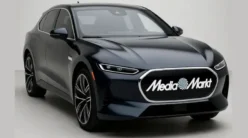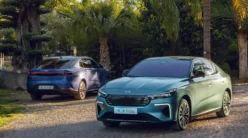The smartphone has become an indispensable part of modern life, serving as a communication tool, entertainment hub, and productivity assistant. However, its development was not an overnight achievement. The journey toward the invention of the smartphone spans several decades and is marked by key technological advancements in computing, telecommunications, and software engineering.
The Foundations: Early Telecommunications and Computing
The roots of the smartphone trace back to the early 20th century when telephone technology first emerged. The development of landline telephones and wireless communication laid the groundwork for mobile technology. In parallel, the advancement of computers, particularly the transition from large mainframes to smaller personal computers in the mid-20th century, contributed to the idea of a portable, multifunctional device.
The First Mobile Phones: 1970s – 1980s
The first step toward a smartphone was the creation of mobile phones. In 1973, Martin Cooper, an engineer at Motorola, made the first-ever handheld mobile phone call using the DynaTAC 8000X. These early mobile phones were bulky, had limited battery life, and were primarily used for voice communication. Over time, improvements in battery technology, miniaturization of components, and advancements in wireless networks led to more portable and efficient devices.
The Rise of PDAs and Early Smart Devices: 1990s
In the 1990s, personal digital assistants (PDAs) emerged, offering limited computing capabilities in a handheld format. Devices like the Apple Newton and Palm Pilot provided features such as note-taking, calendar management, and stylus-based input. Meanwhile, mobile phones were becoming more compact and began integrating features like SMS messaging and basic games.
A significant milestone was the IBM Simon, released in 1994. Often considered the first true smartphone, it combined mobile phone capabilities with PDA functions, featuring a touchscreen and the ability to send faxes and emails. However, its high price and limited battery life prevented widespread adoption.
The Birth of the Modern Smartphone: 2000s
The early 2000s saw the convergence of mobile phones and PDAs into what we recognize today as smartphones. BlackBerry became a dominant force, introducing devices with QWERTY keyboards and push email functionality, making them popular among business professionals. Meanwhile, Nokia introduced the Symbian OS, enabling more advanced applications and internet browsing.
In 2007, Apple revolutionized the smartphone industry with the launch of the iPhone. Unlike previous smartphones, it featured a large capacitive touchscreen, an intuitive interface, and an integrated ecosystem of applications. The introduction of the App Store in 2008 allowed third-party developers to create software, turning the iPhone into a versatile platform for both productivity and entertainment.
The Smartphone Revolution: 2010s – Present
Following Apple’s success, Google introduced the Android operating system, leading to a surge in competition among smartphone manufacturers. Companies like Samsung, Huawei, and Xiaomi entered the market, driving innovation with larger screens, better cameras, and enhanced processing power.
Key technological breakthroughs in the 2010s included:
- 4G and 5G networks, enabling faster internet speeds and streaming capabilities.
- AI-powered assistants like Siri, Google Assistant, and Alexa, enhancing user experience.
- Augmented Reality (AR) and AI-driven cameras, transforming photography and mobile gaming.
Today, smartphones continue to evolve with foldable screens, AI-enhanced features, and deeper integration with wearable devices and smart home technology.
The smartphone’s journey from a mere concept to an essential everyday device has been driven by continuous innovation in communication, computing, and artificial intelligence. As we look toward the future, developments in AI, quantum computing, and even brain-computer interfaces may further redefine what a smartphone can be. One thing remains certain: the smartphone will continue to shape how we connect, work, and entertain ourselves for years to come.







